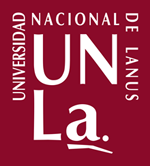Education and Work. A look at the poor youth of Brazil and Argentina
Abstract
The main purpose of the research was to analyze the connections between education and the process of transition to the labor market of the poor youth. Comparative, qualitative methodology and statistical data from PNAD-IBGE (Brazil) and EPHINDEC (Argentina) have been used. The educational-labor trajectories of young people living in favelas in Rio de Janeiro and in the city of Buenos Aires are compared. The selection of the trajectory to be traveled by these young people will have more or less possibilities of being carried out in function of the restrictions that imposes them the objective context in which they live. Among them we find economic, social, habitat, educational circuit characteristics characterized by the segmentation and low quality of the same, gender, lack of social capital and discrimination.
All these constraints are inequalities that interact and are reinforced when they are coupled to each other, and can be interpreted as coupling two types of exclusions: socioeconomic and sociocultural. When this coupling occurs, exclusion tends to be reinforced by acquiring more extreme and persistent forms. In poor youth, the wide range of vulnerability situations that they present highlight the heterogeneity of poverty, and the widening and complexity of inequalities in access to resources and opportunities. The structural elements form the matrix of objective relations through which individuals transit, but do not fully explain the particularities of the trajectories. Five educational-labor profiles have been identified in the educational-labor trajectories of the young poor: a) trajectories of exclusion, b) trajectories of risk, c) trajectories of vulnerability, d) cumulative trajectory, e) successive accumulation profile. The results show that the socioeconomic origin, the educational level of the family and the quality of the educational circuit to which they attended seem to be the determinants of the labor destiny of the poor young people. In spite of these
Reproductive trends, research also shows that some young people with motivation and proactive strategies manage to enter accumulation trajectories. Vocational education represents an important alternative, especially for those who can not access or remain in university and / or are inclined towards technical careers. Necessary, is the existence of institutional mechanisms that can support the transition to work, in order to generate greater opportunities for the young in poverty.






